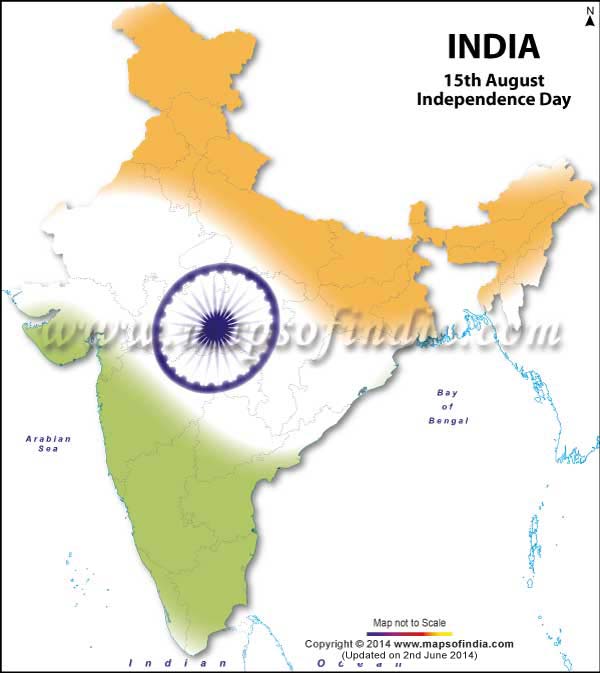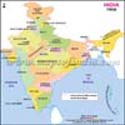What is the significance of 15th August in India
The republic of India gained its independence from the rule of the British on 15 August 1947. Since then every year, 15th August is celebrated as the Independence Day in India to commemorate its freedom from the 200-year-old British government.
History of 15th August
In 1757, after the British victory in the Battle of Plassey, the rule of East India Company started in India. By 1858, the British Crown had assumed control over India. The situation after World War I was marked with suppressive and exploitative laws by the British. This led to revolutionary calls for independence, and sparked the phase of non-violent and non-cooperation movements followed by the civil disobedience movement.
The enduring leader and a national symbol for all these movements was Mohandas Karamchand Gandhi- the Father of the Nation. The next decades were marked with constant struggles between the Indians and the British for freedom. Many movements and acts were carried out by the Indian National Congress, freedom fighters and the people of India.
In the year 1946, the Labour government, the exchequer of Britain thought of ending their rule over India because of their exhaustion of capital post the World War II. The British government announced, during the early 1947, that they intend to transfer power to the Indians by the month of June 1948. This approaching independence could not decrease the Hindu-Muslim violence in Bengal and Punjab. This led to Louis Mountbatten, the then Viceroy of India to propone the power hand-over date, owing to the fact that the unprepared British army could not cope with the increased violence in the country. In the month of June in 1947, the prominent Indian leaders like Pandit Jawaharlal Nehru, Mohammed Ali Jinnah, Abul Kalam Azad, Master Tara Singh and B. R. Ambedkar agreed for a partition of India along religious outline.
Millions of people belonging to different religious groups tramped across the newly drawn border to find places to reside. This took away around 250,000 to 500,000 lives. Finally, at midnight of 15 August 1947, Pandit Jawaharlal Nehru proclaimed India's independence by reading out his famous speech known as "Tryst with destiny". During this speech, Pandit Jawaharlal Nehru said "Long years ago we made a tryst with destiny, and now the time comes when we will redeem our pledge, not wholly or in full measure, but very substantially. At the stroke of the midnight hour, when the world sleeps, India will awake to life and freedom. A moment comes, which comes, but rarely in history, when we step out from the old to the new, when an age ends and when the soul of a nation, long suppressed, finds utterance. We end today a period of ill fortune, and India discovers herself again."
15th August Celebrations in India
Every year, India's Independence Day is celebrated on this day by all the proud Indians. 15th August is observed as a national holiday throughout the country. Though, local governments conduct the ceremony of flag hoisting all over India, the venue of main celebration is the Red Fort in the capital city New Delhi in India. The celebration starts every year with the unfurling of the tricoloured national flag by the Prime Minister of the nation, followed by a televised speech. The speech generally reflects the present condition of the nation along with the achievements in the previous year and the future development plans. A tribute is even paid by the Prime Minister to freedom fighters of India by declaring the day as a national holiday. Post the flag-hoisting ceremony, patriotic programs by children from schools based in different states is one of the main attractions.
| Independence Day History Maps |
 |
 |
 |
 |
| Indian Freedom Struggle | Pre-Partition Map of India | Non-Cooperation Movement | Tricolor Map of India |
 |
 |
 |
|
| India in 1956 | British Empire Map | Dandi March Route Map | |
Are we ignoring talent in the name of quota?
By Triptee
After Independence India has to face the biggest challenge of upliftment of the backward and poor. For this in 1982, 15% and 7.5% reservation in governmental jobs and educational institute were introduced for the [...]Read More >>
Can there be Quota on Merit?By Aman Anand
Here are some examples to think upon. Govind Jaiswal, son of a Rikshawala, scored 48 rank out of 474 successful Candidates of IAS officer exam in 2006. Autorickshaw driver's daughter Prema Jayakumar, tops CA [...]Read More >>
Is NDMA ready to face off another natural calamity?By Triptee
NDMA stands for "National Disaster Management Authority". It is managed and maintained under the "Disaster Management Act 2005". It is headed by our Prime Minister and its vice chairman is M. Shashidhar Reddy. It is an institution which basically [...]Read More >>
SHARP TURNDOWN OF INDIAN ECONOMYBy Garima
Economic growth is the amount of increase in goods and services produced by an economy over . It is measured as the annual percentage change of gross domestic product(GDP). India consistent growth [...]Read More >>
If you could, how would you reduce crime in your city?By Er Adarsh
With the modernization of the cities, the crime rate is increasing day by day. Every newspaper is filled up with such news and we can see that the world we live in needs a better environment.[...]Read More >>
Are we Paying Environment for GrowthBy Divya
Drop a "Rupee" in a piggie bank and check with no wonder that it is still a "Rupee". But when you drop a rupee in an Economy, it Multiplies. To a great wonder, thousands of crores are invested by IT Companies, Power plants, etc. which resulted in Multiplier Increase in income.[...]Read More >>
Last Updated on : November 13, 2025
